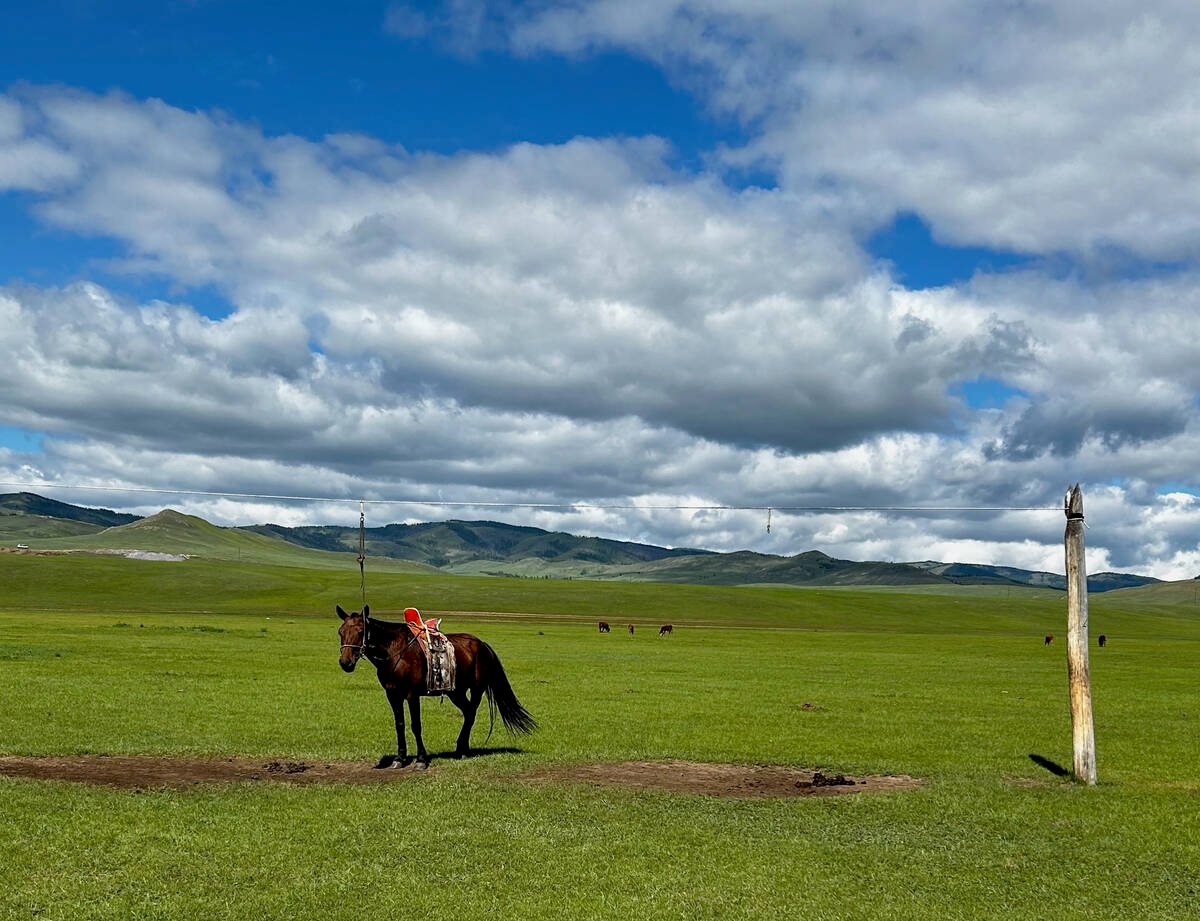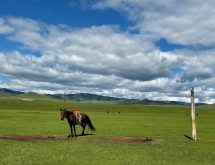It was a typical summer evening in southern Manitoba, when the lives of Darlene and Roy Vust of Portage la Prairie, Man., were changed forever.
Darlene was in the kitchen pickling when she looked out the window to see a neighbour’s truck coming up the lane faster than it ought to.
As she opened the door and their eyes met, a wave of goose bumps swept over her.
“Darlene, it’s Roy,” said the neighbour.
“He’s at the hospital.”
Roy Vust, 58, had finished supper just a few minutes earlier and yelled over his shoulder to Darlene that he was going to mow ditches and would be back before dark.
Read Also

University of Saskatchewan experts helping ‘herders’ in Mongolia
The Canadian government and the University of Saskatchewan are part of a $10 million project trying to help Mongolian farmers modernize their practices.
He was driving an Allis-Chalmers D19 tractor pulling a 10-foot Woods mower.
The past few weeks had been dry so he was able to get a good reach into the ditch. Roy was well into his task and was approaching a dead end when he pushed in the clutch.
“My foot must have slipped because the tractor reared up and over backwards,” Vust said later.
“Looking back it’s the only thing that I can figure must have happened.”
According to studies by the Canadian Agricultural Injury Surveillance Program, tractor rollovers cause one in five work-related farm fatalities.
Rear rollovers, like the one involving Vust, generally happen too fast for the operator to react. It only takes three-quarters of a second to reach the point of no return.
“It was all over in an instant… even before I had time to react,” Vust said.
“The first thing I thought (after the tractor flipped) was, ‘I’ve got to get out of here,’ but my left leg was somehow pinned. So then I thought I might have to wait for help. Then the fire started.”
“I don’t know how I got out. I believe the good Lord got me out of there. I was standing there a piece away from the tractor and could still really feel the heat. Then I realized that my clothes were on fire.”
The dry summer had left the ditches dry so Roy had to drop and roll to extinguish the fire, but his fuel soaked clothes did not go out quickly or easily.
“I was about 11Ú4 kilometres from the farm, so I started walking home for help,” recalled Vust.
“I could see traffic ahead and waved and yelled, but no one on the road heard or saw me.”
A neighbour noticed the fire and came to see what was going on.
Roy flagged him down and was taken immediately to the hospital in Portage la Prairie, about four km away.
In shock and not realizing the extent of his injuries, Roy simply walked into the emergency area and politely asked a nurse if she could help him. Meanwhile, the neighbour was heading back to the farm to get Darlene with a single-minded urgency that takes over when a friend is in need.
“Sitting in that waiting room all by myself was the loneliest place in the world,” recalled Darlene. “I wouldn’t wish that on anyone.”
Roy was diagnosed with 50 percent second and third degree burns, mostly on the upper body and parts of the legs.
It was quickly determined that he would need more specialized care. With Darlene by his side, he endured the nearly one hour drive by ambulance to the Health Science Centre in Winnipeg.
“That ride was mostly a blur,” Vust said. “But I remember looking at the back of my hands and the skin was just hanging off. It looked like a piece of melted plastic.”
Roy spent the next three weeks in critical condition in the intensive care ward enduring skin grafts and fighting infections. When it became clear he would survive, Roy was transferred to the burn unit to begin rehabilitation and physiotherapy.
“It was a real milestone for me when they removed the feeding tube and I got to eat solids again,” said Vust.
“It tasted good to eat food and made me feel things were getting back to normal.”
Roy was surprised at what a chore it was to eat. He had lost all muscle tone and co-ordination in his hands and had difficulty scooping the food and getting it to his mouth.
About 31Ú2 weeks after the incident, a nurse came in to help him walk again.
“After about 10 metres I was exhausted,” he said.
“In fact I was kind of embarrassed that that was all I could do. I remember wondering how long it would take to get back into functioning shape.”
More determined than ever, Roy worked hard at his physiotherapy.
He knew that back on the farm, his sons Jeff and Kevin had left their off-farm jobs and returned home to complete the harvest and fall work.
With the help of family and neighbours, 550 acres of wheat, oats, barley, canola and edible beans were harvested.
Confined to hospital, Roy considered his dedicated rehabilitation as his contribution.
“Nobody has an accident Ñ the whole family does,” said Darlene.
“It affects everyone.”
A little more than a month after the incident, the doctors agreed to let Roy go home and be treated as an outpatient with physiotherapy from the Portage la Prairie hospital.
Roy’s health improved steadily all winter and by spring he was seeding crops, fully recovered but now he is farming differently.
“I replaced the tractor that was destroyed in the fire with one with a rollover protective structure,” said Vust.
“It might not have stopped the tractor from turning, but I could have got out of there before the fire started. Also, I always make sure Darlene or someone knows exactly where I am, what I’m doing, and what time I should be back. So I guess I learned a little bit.”
Vust’s story is all too common in Canadian agriculture.
Studies indicate that 61 percent of farms are run by single operators who routinely work alone. Three-quarters of farm-related injuries are caused by tractors and other machinery. This makes farm safety prevention and preparedness a necessity, not a nicety.
“Farm safety is in the details” is the theme of Canadian Agricultural Safety Week, March 9-15.
The campaign examines the physical demands of farm work with a special focus on seniors and what can be done to reduce the risks of injuries and fatalities.
To help motivate producers on a more personal level, memo boards with the reminder, “I’m farming safely at …” are being distributed to encourage producers to leave a note informing others where they will be working and what time they expect to be back.














